The formidable Carrier Air Wing of China’s future Type-003 aircraft carrier
PorGASTÓN DUBOIS01/11/2021
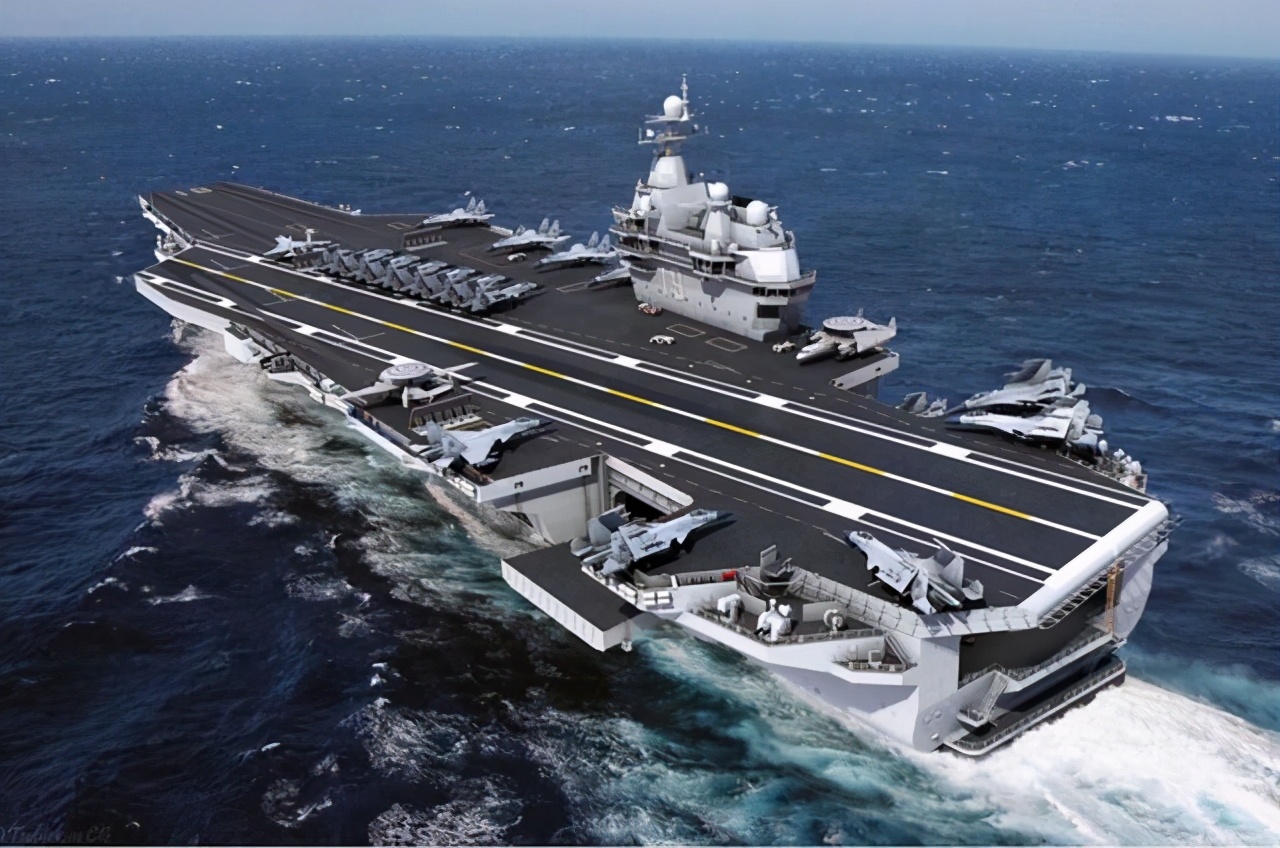
The Chinese People’s Liberation Army Navy (PLAN) seeks to become the second most powerful in the world (perhaps it already is), and eventually dethrone the US Navy, for which it is growing at a dizzying pace. In fact, by the end of 2020, according to US intelligence, the PLAN had 360 warships, against the 297 of the US Navy, surpassing it numerically.
But to compete for supremacy in the seas against the world’s most powerful navy, it is also necessary to bet on quality, building larger and more capable ships, which will allow China to move from its strategy of protecting territorial waters to one of projecting global strength and influence. For such purposes, large aircraft carriers are the tools par excellence.
learning curve
Today the Chinese Navy has 2 aircraft carriers (or aviation cruisers), whose design originated in the former USSR, with skyjump type ramp for aircraft take-off and oblique runway and arresting cables for their recovery (STOBAR type design). Its main aerial vector is the J-15 heavy fighter, derived from the J-11 and a prototype of the Su-33 (embarked version of the Su-27) purchased together with its first aircraft carrier from Ukraine. This ship was completed and modernized in China, receiving the name CNS Liaoning.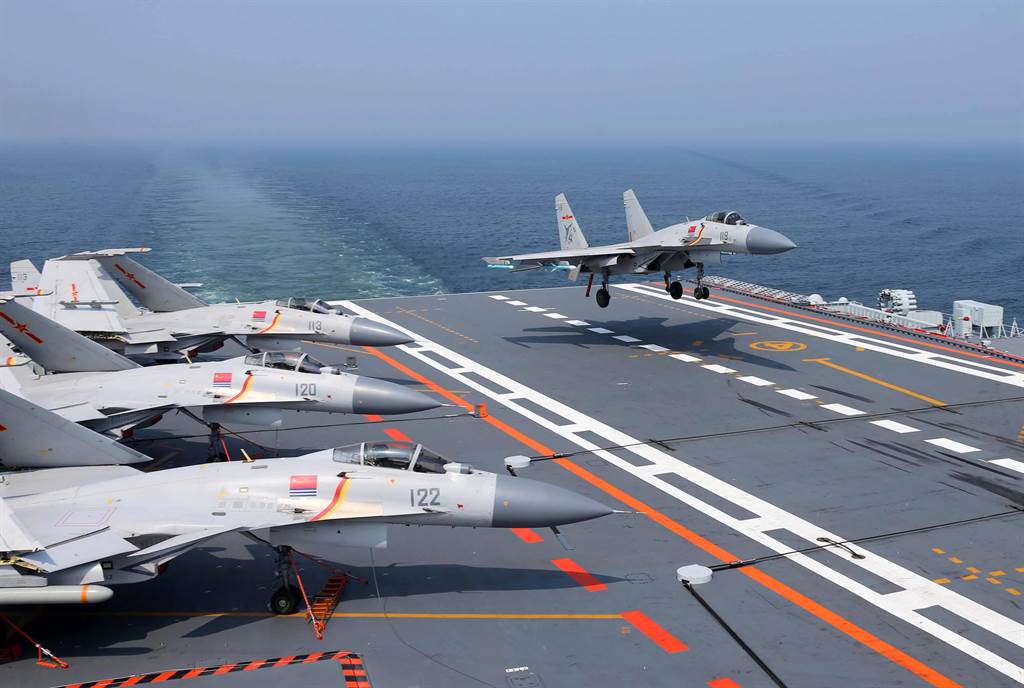
A new, more advanced variant of the Flying Shark would integrate next-generation technologies comparable to those of the J-11B and J-16. These would include new and more powerful domestic engines with vectored thrust; new 5th generation electronic warfare and avionics systems; possible use of artificial intelligence; a powerful active electronically scanning AESA radar; the latest range of smart weaponry, such as the PL-15 missile for long-range air-to-air combat; extensive use of composite materials in the fuselage and RAM coatings to reduce its radar signature, etc.
This new version could remain single-seat, or a two-seat version could be developed, similar to the Air Force J-16 (PLAAF), which already incorporates several of the technological elements mentioned above.

Prototype of the J-15 adapted to take off by catapults.
With a rear systems operator’s station, it would have greater capabilities for air-to-sea and air-to-ground operations, while improving its coordination in strike packages with other aircraft or drones. The two-seat configuration would allow the development of an airborne analog of the J-16D electronic warfare and air defense suppression aircraft, such as the US Navy’s EA-18G Growler.
J-35, the stealth aircraft of the Chinese Navy
Born as the Shenyang J-31 Gyrfalcon, it was the second stealth fighter flown in China, after the Chengdu J-20. It is a medium-weight twin-engine fighter, similar in category to the F-35. In fact, skillful Chinese cyberespionage maneuvers were reportedly able to steal classified information from the F-35 that ended up helping in the design of the J-31.
J-31 prototype during a demonstration flight in 2014.
The evolution of the J-31 had been slow, as the Air Force did not show much interest in it, focusing its efforts on the J-20 and the 4.5 generation aircraft such as the J-10C, J-11B and J-16. However, the situation changed when the PLAN saw the design’s potential as an embarked fighter.
During this year’s Zhuhai air show, AVIC (Aviation Industry Corp of China) announced that it will unveil its next-generation embarked combat aircraft before the end of 2021, and it looks like it will deliver, because just a few days ago a photo of what appears to be the first flying prototype of the J-35 was leaked to Chinese social networks.
J-35 is the «unconfirmed» designation that could be adopted by the J-31-derived embarked fighter, such as the J-15 Flying Shark, which is derived from the J-11 and the Su-33 prototype purchased in Ukraine.
According to information released by AVIC personnel during Zhuhai 2021, the J-35 would have a very low radar signature; a powerful advanced electronic countermeasures complex; high information gathering and handling capability, giving the pilot excellent situational awareness and outstanding capabilities in the BVR (beyond visual range air-to-air combat) arena.
It would also excel in air-to-surface missions, utilizing a diverse range of smart munitions that it will house in a large weapons compartment under the fuselage, whose estimated payload capacity is 2,268 kg. And when stealth is not a necessity, the J-35 can carry more armament in 3 external hardpoints under each wing.
https://i0.wp.com/www.aviacionline.com/wp-content/uploads/2021/09/FC-31-embarcado.jpg?ssl=1

Powered by a pair of WS-13E engines (replacing the Klimov RD-93s it previously used, the same one that powers the JF-17), according to AVIC, the J-31/FC-31 has a maximum takeoff weight (MTOW) of 28 metric tons, an operational ceiling of 15 kilometers and a top speed of Mach 1.8, or 2,205 kilometers per hour, with an estimated range of 2,000 kms.
The J-35 will be the discrete companion to the future iteration of the J-15, and they will work as a team, much as the US Navy’s F/A-18 E/F Super Hornet and F-35C Lightning II do.
Unmanned
Shenyang Corporation is working on an unmanned stealth fighter, the GJ-11, which could be developed as an embarked version to support the long-range strike capabilities of China’s future aircraft carrier air group.Video images posted on Chinese networks suggest that the future drone will have, like the GJ-11, a flying wing shape and internal weapons bays to minimize its radar signature, with a wing folding system and arresting hook and reinforced landing gear for on-board operation.
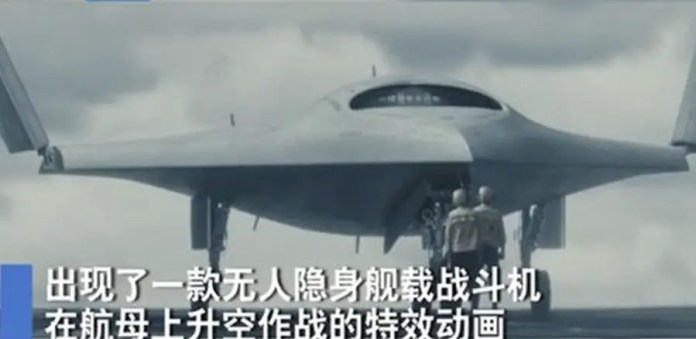
Its missions could be, in addition to air-to-surface and air-to-ground attack, intelligence and in-flight aircraft refueling (such as the Boeing MQ-25).
Xian KJ-600, the eyes of the fleet
The new aircraft carrier, with catapults that allow heavy aircraft to take off, will be able to incorporate such essential aircraft as Airborne Warning and Control (AEW&C).It is precisely for this purpose that the Xian KJ-600 was developed. To no one’s surprise, the new aircraft is very similar to the Grumman E-2 Hawkeye (no time wasting reinventing the wheel).
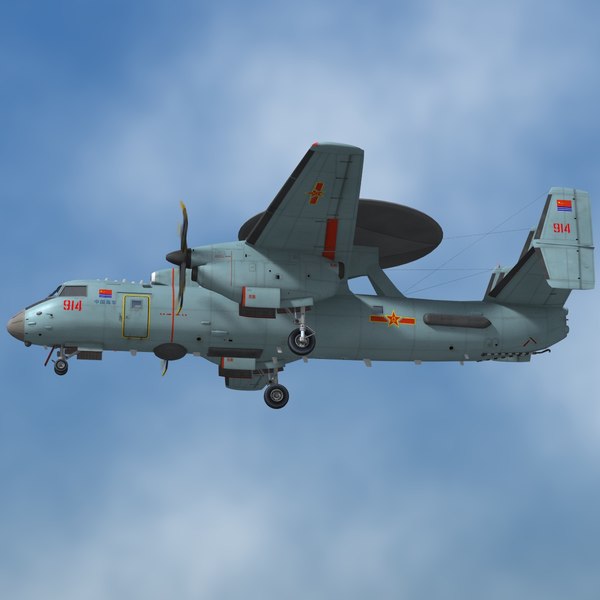
KJ-600
As a starting basis, a STOL (short take-off and landing) Y-7 cargo aircraft was used, which is based on the Russian An-24, produced under license in China. It was fitted with a radome on top and the necessary modifications were made, especially to the tail rudder.
The project evolved, borrowing solutions from the E-2 until the KJ-600 was born, no longer a derivative of an existing aircraft, but a design created specifically for the role it was to fulfill.
In the notorious province of Wuhan, the Chinese built a building, on the roof of which they recreated the deck of the aircraft carrier Liaoning, where they conduct tests and concept evaluations for their Navy’s future embarked aircraft. It was there that satellites captured the first images of the KJ-600.
The KJ-600 will be equipped with a large AESA radar, other passive detection systems, as well as secure communication and data link systems.
Its functions will be to extend the detection range of the fleet air defense, as well as to increase situational awareness, management and command and control over the battlefield for offensive and defensive operations of the carrier task force.
Anti-submarine warfare
There are 2 candidates to become the primary rotary-winged anti-submarine means of the future Type 003. They are the Z-18F Sea Eagle and the Z-20F.Changhe Aircraft Industrial Corporation (CHAIC) Z-18F
The Z-18F is a highly modernized and newly manufactured version of the Z-8, which was developed in the 1980s from the French SA-321J Super Frelon, of which China purchased 13 units in the 1970s.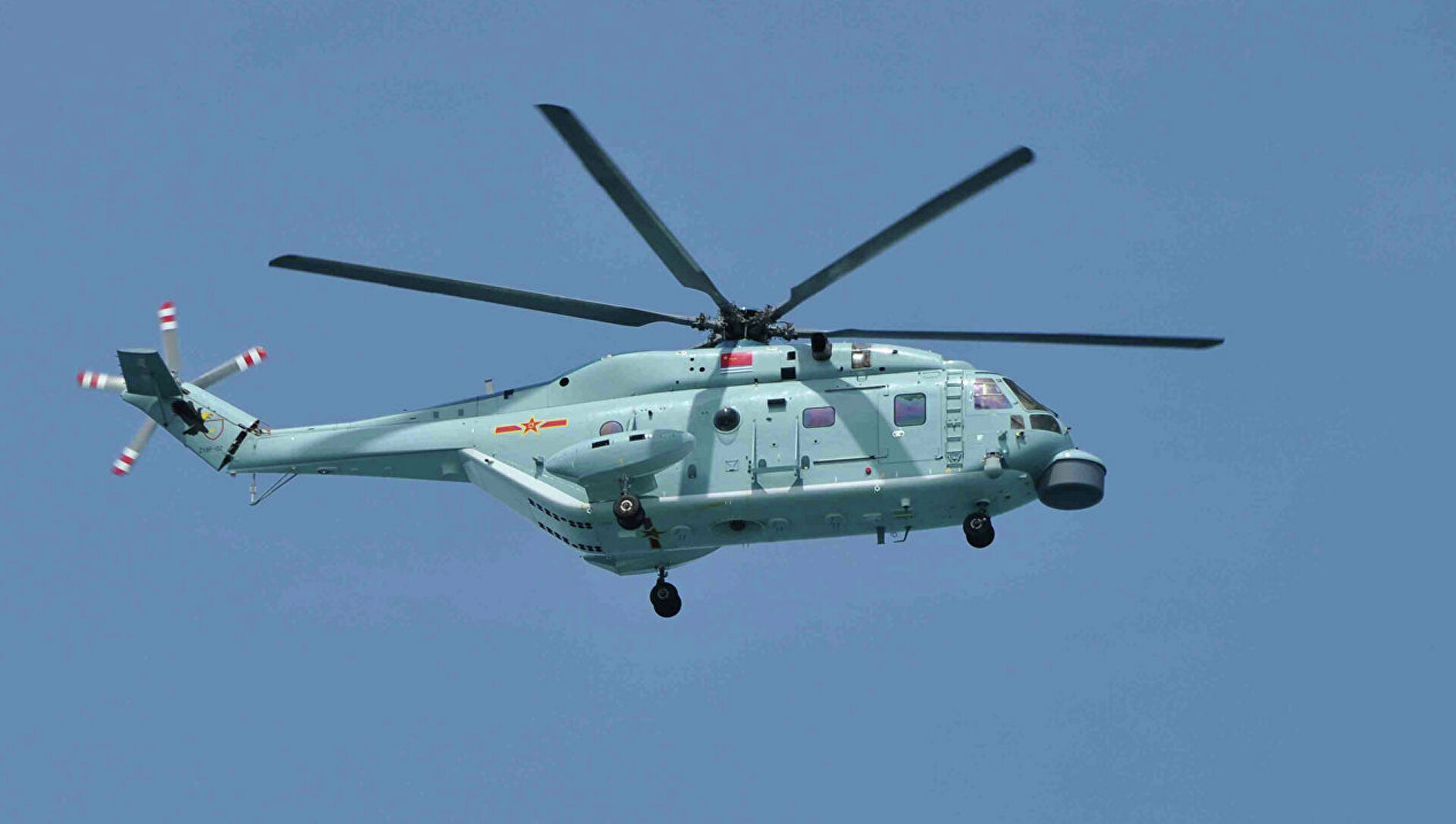
The Z-18F made its first public appearance in 2014. As its role is long distance anti-submarine warfare (ASW) and anti-surface warfare (ASuW), it is equipped with a surface search radar under the nose, a FLIR/TV gimbal, sonobuoys and a dipping sonar that deploys through a round opening in the bottom of the fuselage.
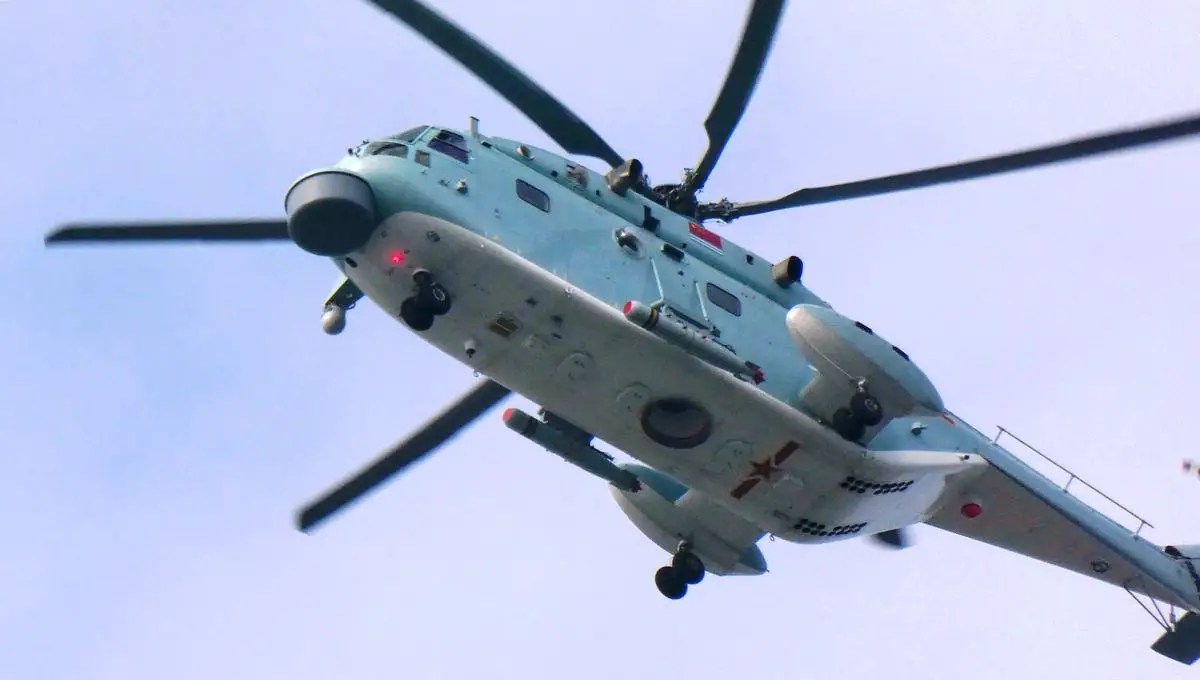
The helicopter has 4 pylons on the sides of the fuselage to carry weapons such as light torpedoes, mines or anti-ship missiles. This helicopter is believed to have been in service aboard the CNS Liaoning, but to date it is unknown if this model is in serial production.
Harbin Z-20
Developed by the Harbin company, the Z-20 evolves from the S-70, the civilian version of the Black Hawk, of which there are a few dozen in service in China, although it may be a technological equivalent to the latest versions of the Sikorsky UH-60 in production.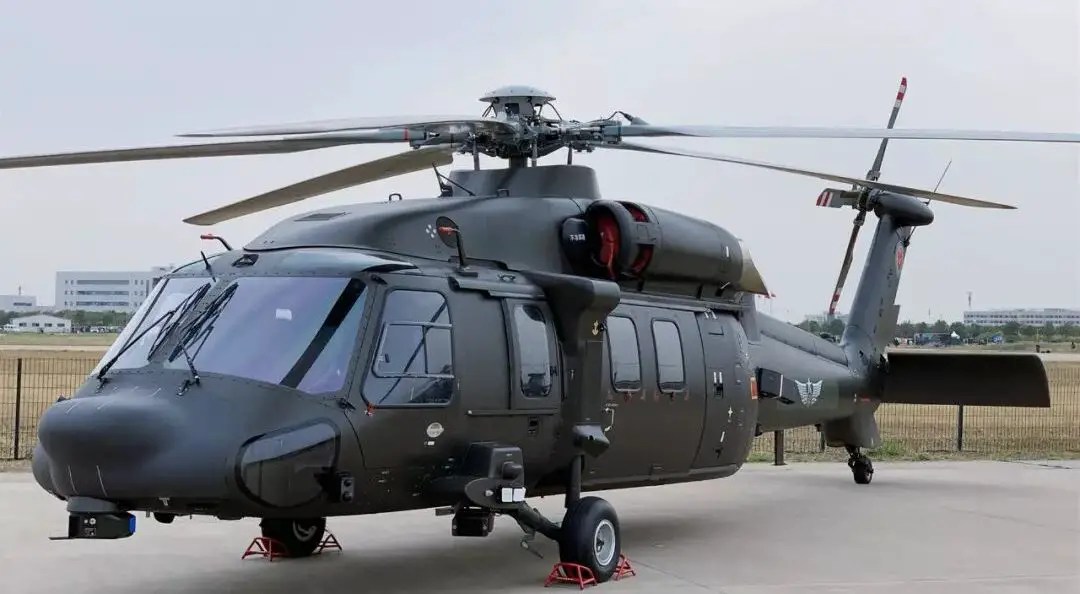
This helicopter made its public debut at the National Day military parade on October 1, 2019. During the 2019 China Helicopter Development Forum, Wang Xibao, chief engineer of AVIC Harbin Aircraft Industry Group, said the aircraft uses many of the world’s most advanced technologies, including active vibration controls, fly-by-wire, domestic engines and low-noise, high-performance rotor design.
The idea behind the Z-20 is to have a multi-role, all-occasion helicopter that can be adapted to as many missions as possible, much like the ubiquitous Black Hawk. Between 2,000 and 3,000 units are expected to be produced for all branches of the People’s Liberation Army.
One of these variants will be the Z-20F for ASW combat for the PLAN. Analogous to the American MH-60R, the navalized version of the Z-20 has emergency flotation systems, folding rotor blades, as well as folding stabilizer and tail rotor, to reduce its length and fit in the hangar of frigates and destroyers.
As for its mission equipment, the Z-20F carries an EO/IR optronic system in the nose, a surface search radar antenna under the forward fuselage and an opening in the «floor» to deploy an airborne dipping sonar. It is also expected to be able to externally deploy a magnetic anomaly detector (MAD) and to carry a sonobuoy dispersion system on the side.
It has external pylons to carry various missiles, light torpedoes and smart mines.
This will probably be the configuration of the embarked combat air wing of the future aircraft carrier type 003 and later type 004. This will be the most visible face of the power and influence projection capacity of the Chinese Navy, whose ambition is to dispute the hegemony of the formidable US Navy in the Pacific and Indian Oceans by 2050.

The formidable Carrier Air Wing of China’s future Type-003 aircraft carrier
The Chinese People's Liberation Army Navy (PLAN) seeks to become the second most powerful in the world (perhaps it already is), and eventually dethrone the US N
 www.aviacionline.com
www.aviacionline.com


